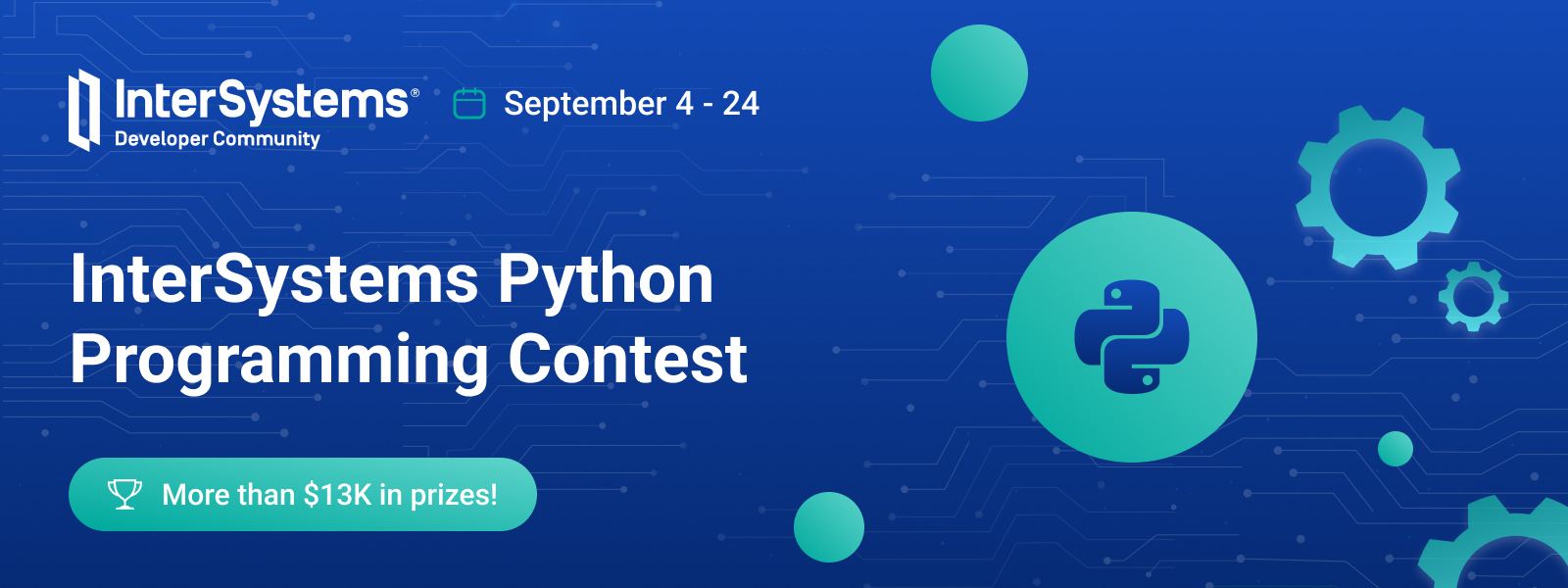Hi Developers,
We are pleased to invite you all to the new InterSystems online programming contest focused on Python!
🏆 InterSystems Python Programming Contest 🏆
Duration: September 4 - 24, 2023
Prize pool: $14,000

InterSystems IRIS is a Complete Data Platform
InterSystems IRIS gives you everything you need to capture, share, understand, and act upon your organization’s most valuable asset – your data.
As a complete platform, InterSystems IRIS eliminates the need to integrate multiple development technologies. Applications require less code, fewer system resources, and less maintenance.